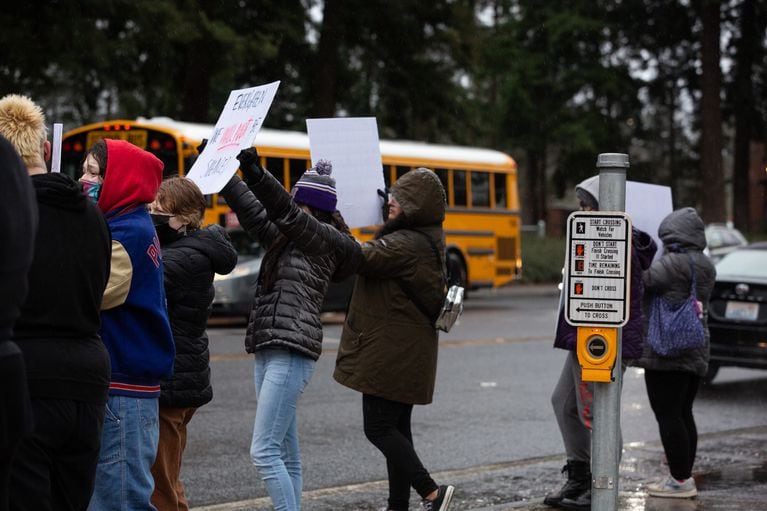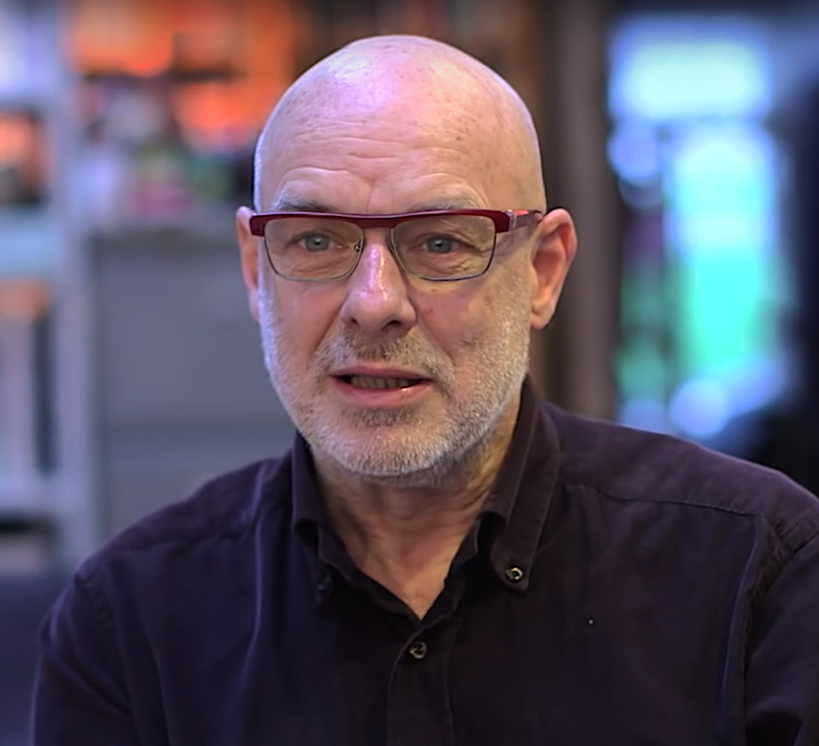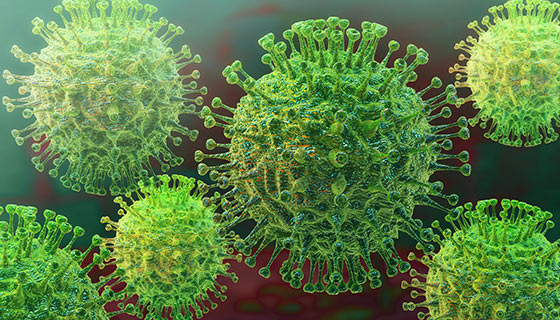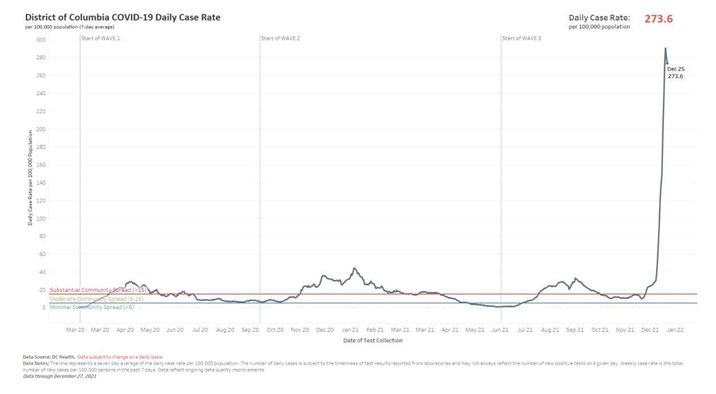
A Sense of Doubt blog post #2518 - Not Apathy, Purposeful Ignorance - Weekly Hodge Podge for 2201.09


Students outside the Evergreen Public Schools administrative offices in east Vancouver wave signs condemning sexual abuse. Students said the school has recently failed to respond to reports of harassment and abuse.
Troy Brynelson / OPB
https://www.opb.org/article/2021/12/16/evergreen-school-district-students-walk-out-as-district-grapples-with-sexual-harassment-concerns/
EDUCATION
Evergreen Public Schools students walk out as district grapples with sexual harassment concerns
The Southwest Washington school district has been battling public questions on whether school officials disregarded reports of unwanted sexual behaviors among students and teachers. One advocacy group has harshly criticized the district.
About two dozen Evergreen Public Schools students protested Wednesday against what they say are repeated failures to protect students from sexual harassment and abuse.
It’s at least the second time this month that students – and others who joined the protest – flocked to the district’s administrative offices in east Vancouver to raise concerns.
“If the issue isn’t apathy, it’s like purposeful ignorance,” said Sami Allen, a 20-year-old recent graduate who joined several others in waving signs at passing cars and chanting for students’ protection.
The recent rallies have formed amid rising concerns from students. Lilly Lewis, a sophomore who helped organize the protest, said numerous students are concerned that reports of unwanted sexual attention have gone unanswered.
“They could have done so much more, and I just feel like they didn’t,” Lewis said.
Among leading factors for the protests are recent controversies involving teachers within the district. On Nov. 22, a humanities teacher named William Marsh was convicted for child molestation of his adopted daughter, according to court records.
Lewis, once a student of Marsh, said she and multiple students had complained to the district about other alarming behaviors about the teacher. According to Lewis and other students at the protest, school administration didn’t appear to handle complaints properly.
After Marsh’s conviction, Lewis created an Instagram page through which she has been organizing the protests.
Evergreen spokeswoman Gail Spolar said the district takes allegations of sexual misconduct seriously and investigates each one. She noted that school employees are mandatory reporters, required by law to tell authorities when they learn of potential abuse.
However, outcomes of investigations aren’t always as well-known as allegations, Spolar said.
“We also understand that students and parents may think complaints are not handled when they do not know outcomes and actions taken on staff or student investigations due to privacy laws,” Spolar said.
Still, the district has been fully battling the perception – and not just from students or former students.
Some members of YWCA Clark County, a group advocating for women and survivors of domestic violence and sexual assault, joined the protest Wednesday. The organization said it has been receiving a deluge of complaints related to incidents within Evergreen Public Schools.
Deputy Director Vanessa Yarie said YWCA Clark County regularly hears from the community, but rarely does it field as many complaints as it has recently about Evergreen. Yarie said the complaints are varied, but tend to focus more on peer-to-peer incidents than anything involving teachers.
Yarie said a common theme has been students’ frustration with a feeling of being ignored and doubted.
“We are hearing that there’s no process of accountability. There’s no follow-up,” Yarie said.

Students outside the Evergreen Public Schools administrative offices in east Vancouver wave signs condemning sexual abuse. Students said the school has recently failed to respond to reports of harassment and abuse.
Troy Brynelson / OPB
The calls led YWCA Clark County to publish a statement last Friday, calling on Evergreen’s elected board members to rectify any failures in the reporting system. Executive Director Dunetchka Otero-Serrano wrote the district is “miserably failing to bring forth any accountability.”
“You have cultivated an environment where sexual violence is allowed. Your actions have placed fault on survivors and punished them instead of believing them,” Otero-Serrano wrote.
In response, Evergreen School Board President Victoria Bradford wrote a letter calling the YWCA’s statement “misleading” for “accusing the school district of not properly handling and/or ignoring student complaints regarding sexual assault and harassment.”
Bradford wrote the letter had “propagated misinformation, and potentially harmed, rather than helped, students gain needed assistance.”
While YWCA has not publicly responded to Evergreen’s retort, school board member Rachael Rogers issued her own statement that said Bradford’s letter “100% does NOT represent my views.”
“As a district it is our duty to make the safety of children our number one priority,” Rogers wrote to YWCA. “If our children feel that we are not taking allegations of sexual assault/abuse seriously, then at a minimum, we have a problem with perception/culture/optics and that needs to be fixed.”
Bradford spoke again publicly on Tuesday. In her statement, she said she agreed the district needed to re-examine how complaints are handled at the district.
“In the last week, it has also become clear, after listening to our students, that we need to examine our processes and make it even safer and easier to report any unwanted or threatening behavior,” Bradford said. “We need to make sure every student in our care has the opportunity to step forward.”
Despite the statement, Lewis, the sophomore, said at the protest Wednesday that she doesn’t feel like administrators are being genuine.
“I just have a really big lack of trust with anybody in their district,” Lewis said. “I think that’s something they have to earn back from students and I don’t think they realize that.”
Best book?? Not sure I agree...
2. The Fellowship of the Ring by JRR Tolkien
3. 1984 by George Orwell
4. One Hundred Years of Solitude by Gabriel Garcia Marquez
5 Beloved by Toni Morrison"Three writers -- John Steinbeck, Ernest Hemingway and William Faulkner -- received nominations for seven of their books," reports the New York Times. "Other popular authors included James Baldwin, Margaret Atwood and Virginia Woolf, who each had five books nominated. And readers nominated four of Joan Didion's books: 'The Year of Magical Thinking,' 'Slouching Towards Bethlehem,' 'The White Album' and 'Play It as It Lays.'"
Would you agree with the number one pick? Is there a book worthy of this accolade that New York Times readers missed?
 |
| https://bookmarks.reviews/the-1960-time-magazine-review-of-to-kill-a-mockingbird/ |
I can already see the posts coming...
— Paul 🛠️⚕️🌿🚴♂️ (@Cyberskout99) January 9, 2022
"Actually only 0.01% of scissor stabbings are fatal. It's only mild bleeding."
"This is all part of the liberal left Communist Democraps plan to steal our stabbing liberties!"
"Stabbing is a cherished Christian tradition, also freedom." https://t.co/anFGwaXZHz
“I am now completely invisible,” Porizkova explains. “I walk into a party, I try to flirt with guys and they just walk away from me to pursue someone 20 years younger. I’m very single, I’m dressed up, I’ve made an effort – nothing” https://t.co/MTkcaOzwkt
— The Times (@thetimes) January 8, 2022
Keith Richards pic.twitter.com/o3htbMIB16
— Lurch AdoptDon'tShop (@Lurchhouse) January 1, 2022
Keith Richards giving Willie Nelson his first ever guitar lesson pic.twitter.com/21ssjFgjrP
— JSWilliams1962 (@jswtreeman) January 8, 2022
Keith Richards walks away from Hindenburg crash unscathed; refuses medical treatment. pic.twitter.com/tB2ciwV4Vf
— UNITE TO REMOVE THE BLIGHT (@Sharpinsky) January 9, 2022
Happy 78 birthday to the legendary Led Zeppelin guitarist Jimmy Page! pic.twitter.com/xWnaVVYGp0
— Rock And Roll Garage (@rocknrollgarag1) January 9, 2022
Can Twitter PLEASE do away with the "trending" mechanism? Seeing Stevie Wonder, Elton John, Tina Turner and Dolly Parton trending on an hourly basis is just stressing me out way too much!!! pic.twitter.com/FYGCG38cr7
— #1 Magazine Store (@soapsnstuds) January 8, 2022
Dolly Parton is trending, so here's a reminder that she donated $1M for vaccine research, wrote a little song about why it's important to #GetVaccinated and through her literacy program has put over 100 MILLION books in the hands of children. She's a national treasure. pic.twitter.com/VsfrTxLPoY
— Victoria Brownworth (@VABVOX) January 9, 2022
Some social media users claim “mass formation psychosis” has occurred during the pandemic. Experts in crowd psychology, however, said this is not a term recognized in the field of psychology, nor is there evidence of any such phenomenon https://t.co/hPO2HrQgGR
— Reuters Fact Check (@ReutersFacts) January 7, 2022
"Mass formation psychosis," an unfounded theory spreading online, suggests millions of people have been “hypnotized” into believing mainstream ideas to combat COVID-19. Psychology experts say the concept is not supported by evidence. Get the facts @AP. https://t.co/TT61pPFtwL
— AP Fact Check (@APFactCheck) January 8, 2022
RETWEET if you think COLIN KAEPERNICK is a HERO pic.twitter.com/tdorw56yIn
— Jessica Flores 🌺 (@jessicaflres) January 8, 2022
Colin Kaepernick kneeled for this very reason. #JusticeForAhmaud #AhmaudArbery @Kaepernick7 pic.twitter.com/NaYCcy5ypI
— Tru McHugh (@TruMchugh) January 7, 2022
Downplaying COVID#DidNotGoAsPlanned.@FridayMemeTeam pic.twitter.com/uUMjHHZlbG
— 𝙼𝚒𝚍𝚠𝚎𝚜𝚝 𝔤𝓊ʸ (@MidwestByName) January 8, 2022
In the end, the fishing trip #DidNotGoAsPlanned pic.twitter.com/KNd18uRFER
— Mike (@ItalianTexans) January 8, 2022
When the media and newspapers both sides every gd issue. You are failing democracy. Stop the whataboutism. #DidNotGoAsPlanned pic.twitter.com/TzrZPqLijV
— Monica. (@JustMonie31) January 8, 2022
iWinced pic.twitter.com/xsFE1qXz1U
— Paul 🛠️⚕️🌿🚴♂️ (@Cyberskout99) January 8, 2022
Someday a robocaller is going to dial into another robocaller creating a loop and long after the human species is gone they will perpetually be trying to sell one another an extended car warranty.
— • Jordan • Pier • (@leavingrichmond) January 7, 2022
The 15 Warnings Signs of Impending Tyranny https://t.co/tHyPipWmXY
— gmrstudios (@gmrstudios) January 7, 2022
On Jan. 6, 2021, photographer @kentnish documented the attack on the U.S. Capitol.
— Los Angeles Times (@latimes) January 5, 2022
He let his GoPro camera, attached to his helmet, run as long as the battery could last. That footage had never been shown until now.https://t.co/qXxAnZIGSm pic.twitter.com/tTy1fuGmFa
Fact Checker: Rep. Jim Jordan’s false claim that Pelosi denied a request for National Guard troops https://t.co/H2zx9Hag6i
— The Washington Post (@washingtonpost) March 1, 2021
There’s no proof that Trump requested 10,000 National Guard troops for Jan. 6, or that Pelosi denied it. https://t.co/KJWLzCgHvb pic.twitter.com/5CEuHFTeWz
— PolitiFact (@PolitiFact) March 3, 2021
I find it disturbing, that those who were angered at Kaepernick for taking a knee, claiming he disrespected the flag…were the same people using the flag to assault and injure Capitol police men and women during an insurrection! 🤔😖
— Eve Lueck (@EveLueck) January 6, 2022
Sorry but Pat Benatar invented the bad bitch pic.twitter.com/HrPcH49zXY
— Real HouseMark (@RealHouseMark) January 4, 2022
Good day to remind everyone of the travesty that Frampton and Pat Benatar are not in the Rock and Roll Hall of Fame, but Green Day is. 🤷🏼♂️ https://t.co/lHN8QXo6pw
— Mike Honcho (@BigDaddyDore) January 6, 2022
Pat Benatar dropped "Love Is A Battlefield" 38 years ago today.
— Mike Sarzo 🏳️🌈 (@mikesarzo) January 7, 2022
The video for that song! Damn! She taught the world how to be a boss ass bitch in the best possible way back then! pic.twitter.com/uwBVgnehqb
A Return to Robo-Signing: JPMorgan Chase Has Unleashed a Lawsuit Blitz on Credit Card Customers https://t.co/4GIdicVg7B
— gmrstudios (@gmrstudios) January 7, 2022
When Dick Cheney Is The Best The Republican Party Has To Offer, You Are Seditionist Pork-F*ck Trash https://t.co/1qJA2m43LY
— gmrstudios (@gmrstudios) January 7, 2022
Youngkin Picks Trump EPA Head To Take Care Of Virginia Environment, Take Care Of It With A Baseball Bat https://t.co/xAAV0XMfux
— gmrstudios (@gmrstudios) January 7, 2022
Matt Gaetz And Marjorie Taylor Greene Sick Of Being Booby Trapped And Blood Libeled https://t.co/0Lmp8TTrm8
— gmrstudios (@gmrstudios) January 7, 2022
Trump Team's Flawless Big Lie Plan Sought Help From QAnon Guy Ron Watkins https://t.co/sA6cn1MCMw
— gmrstudios (@gmrstudios) January 5, 2022
Sad Loser Trump Cancels January 6 Speech, Guess Nobody Wanted To Hear Him Talk https://t.co/Zdfs3wt1eH
— gmrstudios (@gmrstudios) January 5, 2022
Utah Tech Dude Exposes Jewish Plot To Kill Errebody With Vaccines, Ends Up Out Of Job Somehow https://t.co/D7u6pKhYgQ
— gmrstudios (@gmrstudios) January 5, 2022
Texas Gov Greg Abbott Suddenly Remembers Joe Biden’s President, Begs For Help Against COVID-19 Surge https://t.co/AGabIVtqzA
— gmrstudios (@gmrstudios) January 3, 2022
Sheriff Charged With Pulling Gun On Youth Group Girls Can Keep Job, But Not Guns https://t.co/pUTYYKtZIg
— gmrstudios (@gmrstudios) January 3, 2022
Mean Girls (S03E01)#GoldenGirls #TheGoldenGirls #bettywhite #stolafstories pic.twitter.com/crsLMZGGfP
— St. Olaf Stories (@StOlafStories) December 27, 2021
My 100th birthday… I cannot believe it is coming up, and People Magazine is celebrating with me! The new issue of @people is available on newsstands nationwide tomorrow. https://t.co/kTQnsbMDGK
— Betty White (@BettyMWhite) December 28, 2021
Betty White has died at age 99. https://t.co/vbkrBwyj9U
— TMZ (@TMZ) December 31, 2021
A Majority of Americans Have Lost Their F — ing Minds by @JessicaLexicus https://t.co/vUw6bLi0LP
— gmrstudios (@gmrstudios) December 31, 2021
Dan Rather is a real journalist. https://t.co/JGY6kYx9Ve
— Chrissy 🌻🌸🌼🌺 (@aapi_chrissy) December 21, 2021
Do you agree with Dan Rather that members of Congress should pass a civics test before they can serve?
— Nathalie Jacoby (@nathaliejacoby1) December 28, 2021
#LetsGoBrandonReallyMeans “You can’t handle the truth.”
— Dan Rather (@DanRather) December 30, 2021
As most of you will know, this year marked the 20th — yes, 20th!! — anniversary of the premiere of Harry Potter and the Sorcerer's Stone.
— BuzzFeed (@BuzzFeed) December 29, 2021
Streaming on HBO Max Jan. 1, 2022, the cast will be reuniting once again for the Harry Potter 20th Anniversary: Return to Hogwarts special. pic.twitter.com/MluJ5o24nD
"It was an extra exciting day." https://t.co/MNopm3quOs
— BuzzFeed (@BuzzFeed) December 29, 2021
BREAKING:
— TheSadTruth💙 (@ReportsDaNews) December 28, 2021
It’s official, 4 votes were cast by dead people in Georgia, one of whom voted for Trump.
Slightly under the 5000 that the twice impeached, disgraced, former blogger from Mar-a-lago, Orange Foolius, had claimed.
Biden wins again. pic.twitter.com/DtzsQhzmnX
If you’re a Democrat who is glad that reporters just revealed Trump is having “a meltdown in Mar-a-Lago” right now because the January 6 Committee is weighing a “criminal referral” against him, please RT & follow our account to be immediately notified when we tweet breaking news!
— Occupy Democrats (@OccupyDemocrats) December 28, 2021
Pretty ironic all Republicans can talk about is Bill Clinton, when it was actually Donald Trump who was named in the case against Ghislaine Maxwell by one of the accusers stating she was dropped off with Trump at Mar-A-Lago when she was just 14 years old.
— Kyla In The Burgh 🔥🏴☠️ (@KylaInTheBurgh) December 29, 2021
Dear GQP:
— Craig Rozniecki (@CraigRozniecki) December 30, 2021
I see you got "Tom Hanks" trending. Here's a fact-check for you. Read it and weep. I mean, have someone else read it to you and weep. It seems pretty obvious you can't read. - https://t.co/lByrYWpMYF
Quite frankly I hope Tom Hanks SUES into oblivion EVERY one of the twitter Qanons that continues to pass along the libel
— Ima Cygnenoir (@Bloody_Heck) December 30, 2021
YES!!!!!!!!!!!!!!!!!!
— gmrstudios (@gmrstudios) December 30, 2021
Things We Saw Today: Please Give Us John Krasinski and Emily Blunt in a 'Fantastic Four' Reboot https://t.co/2PhxDqvwTW via @themarysue
White Lady Doing Racism Can't Help But Wonder: Where Have All The Black Friends Gone? https://t.co/yzdi611l3C
— gmrstudios (@gmrstudios) December 29, 2021
I just wish white people would stop telling black folks “you’re not like the others”. That is not a compliment even though you might perceive it as such.
— Charli Huxley (@ImKnotTheOne) December 29, 2021
#IHadAWhiteFriend
#IHadAWhiteFriend who got mad & told me “you people need to be more humble” when I wore my “Teachers for Obama” t-shirt on Inauguration Day 2009 when the entire school met in the auditorium to watch with students. I wore that shirt every Wednesday for 8 years.
— QueenMakeda- Oshun Energy ♌️ 🇨🇲 (@dumplindaughter) December 29, 2021
#IHadAWhiteFriend who said I voted for @BarackObama because he was black.
— LiNC😷LN PARK (@linc0lnpark) December 29, 2021
I said,
“You voted for John McCain because Barack Obama is black.” pic.twitter.com/8RvwPjiSAg
#IHadAWhiteFriend he invited me over his house to eat. His mom put raisins in the potato salad. His mother began explaining why she put raisins in the potato salad. I told her I don't listen to Critical Raisin Theory and stormed out. https://t.co/2MtiacXT9x
— Stephen Crockett Jr. (@SACrockettJr) December 28, 2021
I'd hate for you to be a teacher too. https://t.co/kGn7w7k2Ct
— Tom Nichols (@RadioFreeTom) December 29, 2021
If I’m following, you mean Democrats persuade people to vote for us, and then — hear me out here — people vote for us?Yeah, we did that. #GuiltyOfDemocracy https://t.co/k96TO8jbcZ
— Rep. Eric Swalwell (@RepSwalwell) December 28, 2021
“no bed means no fucking beds” Everyone watch this. #COVID19 pic.twitter.com/2bqGVTgWEt
— Jamie (@jnquincy) December 28, 2021
Shocking Study: Consumers Not Impressed By Brands That Insult Them! https://t.co/kHsHiehRe8
— gmrstudios (@gmrstudios) December 29, 2021
Twitter, as Always, Is My Saving Grace After the CDC Announced Shorter Isolation Guidelines for COVID https://t.co/c3Zz1YAUam via @themarysue
— gmrstudios (@gmrstudios) December 28, 2021
The DART navigation team at NASA's Jet Propulsion Laboratory in California used the stars in the image to determine precisely how DRACO was oriented, providing the first measurements of how the camera is pointed relative to the spacecraft. With those measurements in hand, the DART team could accurately move the spacecraft to point DRACO at objects of interest, such as Messier 38 (M38), also known as the Starfish Cluster, that DART captured in another image on Dec. 10. Located in the constellation Auriga, the cluster of stars lies some 4,200 light years from Earth. Intentionally capturing images with many stars like M38 helps the team characterize optical imperfections in the images as well as calibrate how absolutely bright an object is -- all important details for accurate measurements when DRACO starts imaging the spacecraft's destination, the binary asteroid system Didymos.
 |
| A health-care worker conducts a test at a drive-through coronavirus testing site in Miami on Dec. 29. (Joe Raedle/Getty Images) |
The current omicron surge represents one of the greatest public health challenges not only of the pandemic but also of our lifetime. To deal with the surge over the next six to eight weeks, policymakers need to plan for the impact of what could be 1 million cases a day of new infections in the United States.
Such planning involves being realistic about the effectiveness of vaccination at this point; taking immediate steps to improve public health messaging, data collection and the availability of drug therapies; and doing whatever is possible to ameliorate the potentially devastating consequences for our health-care system.
Likewise, masks can be helpful, but only if they are high-quality and used routinely. This means non-fraudulent N95, KN95 or KF94 respirators, all of which have satisfactory filtration efficiency. Cotton or surgical masks are more for show than effective protection, especially against omicron. Public health messaging is essential, not only on the benefit of masking but also on what constitutes effective masking.
Testing represents another problem area. For one thing, we cannot rely on over-the-counter tests for omicron. Many people, including those fully vaccinated, are negative according to antigen tests days into their illness — but positive according to PCR tests. With the public using antigen tests every day and relying on their results before gathering with family, going to work or visiting public settings, the National Institutes of Health and the Food and Drug Administration must immediately research the performance of available rapid tests and advise people on their reliability and best practices for using them during this surge.
Another area of urgent concern is that we have too few therapies to dent the surge. The two main monoclonal antibody cocktails appear ineffective against omicron. Meanwhile, a third monoclonal that retained effectiveness against omicron is in very short supply. Ditto for the much-heralded covid-19 oral drugs. There are less than 180,000 doses of the Pfizer drug, and it takes months to manufacture. These therapies must be rationed and allocated to those most likely to suffer severe cases: the elderly, younger patients with comorbidities and the immunocompromised. Expect shortages of these therapies in the next few weeks.
Finally, and perhaps most alarmingly, we must brace for the possible catastrophic impact of the omicron surge on the U.S. health system. The weakest link is not the number of hospital beds but the availability of highly trained workers. Approximately 9.8 million doctors, nurses and high-level medical technicians are employed throughout the country. It is possible that 10 or even 20 percent of health-care workers could be infected by omicron in the next eight weeks, as has been reported in South Africa.
Losing that many health-care workers from a system already severely strained by staff shortages would be an enormous challenge. Even with the Centers for Disease Control and Prevention allowing shorter isolation and quarantine periods to help mitigate risk, covid-related absences won’t be addressed by providing hospitals with a thousand more Defense Department health-care workers. Omicron has already caused wide-scale disruptions across the airline industry, in sports leagues and among essential workers. State and local officials must put in place crisis-management plans to account for a 20 percent reduction in the health-care workforces.
To ignore these issues puts our entire country in peril. The time to act is now.
Your Free-Range Organic Chicken May Have Been Processed at a Large Industrial Poultry Plant
To help us make sense of the opaque poultry supply chain, hundreds of ProPublica readers sent in details about their chickens and turkeys. Here’s what we learned.
The two examples from Indiana, from Marian University and Purdue, also reveal how terms like "prioritization" are being used to disguise politically motivated excisions. Prioritization routinely argues that engineering departments need to be the ones getting more money and resources from the administration. Unlike English or political science, which are seen as useless and pointless majors, engineering and computer science carry an implicit promise of a job. Who needs to have read Shakespeare or know about how our political system works when you can rush off to be one among the armies of coders who make our digiverse possible?
That is the dream. In reality, "prioritization" debates, particularly in deep red states, are excellent cover for changing the political demographics of American colleges and universities. The Marian University case is instructive in this sense; the ostensible championing of STEM fields maps neatly onto the project of eliminating the most left-leaning professor, inevitably in departments that teach English or history or political science. If you have a right-leaning board of trustees in a red state like Indiana, professors like Johnny Goldfinger are unwanted, even threatening to those who would like student voters to know less rather than more about the processes of democracy. In a country where everything is riven and divided around political lines, this could well be a covert attack against the otherwise enduring liberal-ness of the college campus....
Despite what current debates about liberal arts would have you believe, not all employers are looking for software developers. A long-range perspective proscribes a rounded education, geared not just for the moment we are in. It is very likely that coding and other functions that administrators believe are the ones that deserve the most priority will be carried out via artificial intelligence processes that can do the painstaking work with far greater accuracy and speed than a human ever can. A liberal arts education is essential to surviving in our polarized world. In educating students in how to respect differences and create dialogue over disagreement, a liberal arts education provides skills essential to maintaining a healthy and functioning democracy.
Creating arbitrary epistemological rankings, where one kind of knowledge is given precedence over others, is failing to attend to the needs of the whole student capable of earning a wage but also of leading a good life....
It only makes sense if the actual purpose of slicing off departments and professors is part of a larger political project that has nothing at all to do with providing the best education.

It can feel, in our inequality-addled world, that we have little left in common — that there is no “we,” just us and them. But multiple crises driving us apart have the potential to unite the species. After all, a rapidly warming planet and global pandemic do threaten us all, even if they don’t threaten us equally. Do solutions exist in the creation of new forms of private property, new ways of moving capital around the world? Can the extinction-level byproducts of capitalist commodification and waste be mitigated by ingenious new forms of financialization? These seem to be the arguments made by purveyors of cryptocurrency and NFTs, an acronym meaning non fungible tokens and — if you haven’t noticed — the only thing anyone in the art world seems to talk about anymore. Why?
Brian Eno has put his opinion on the matter quite bluntly in a recent interview. “NFTs seem to me just a way for artists to get a little piece of the action from global capitalism,” he tells The Crypto Syllabus. “How sweet — now artists can become little capitalist assholes as well.” He obviously disapproves of using art solely to generate profit, but then if we know anything about Eno’s theory of creativity and influence over the past several decades, it’s that he believes the guiding reason for art is to generate more art.
“If I had primarily wanted to make money I would have had a different career as a different kind of person. I probably wouldn’t have chosen to be an artist.” There’s utterly no use in trying to peg Eno as technophobic or out of touch; quite the contrary. But the fictional financial products that have invaded every other sphere of life have no place in the arts, he argues.
When asked why NFTs are touted as a salvation for artists and the art world by cryptocurrency visionaries, including many of his friends and collaborators, Eno replies:
I can understand why the people who’ve done well from it are pleased, and it’s natural enough in a libertarian world to believe that something that benefits you must automatically be ‘right’ for the whole world. That belief is a version of what I call ‘automaticism’: the idea that if you leave things alone and let something or other – the market, nature, human will – take its course unimpeded you will automatically get a better result than you would by tinkering with it. The people who hold beliefs of this kind don’t have any qualms about tinkering themselves but just want a situation where nobody else gets to tinker. Especially the state.
That the sale of NFTs have only benefitted very few — to the tune of $69 million in a single sale in a recent high-profile case — doesn’t seem particularly troublesome to those who insist on their benefits. Nor do the creators of NFTs seem bothered by the enormous energy overhead required by the technology, “an ecological nightmare pyramid scheme,” writes Synthtopia — of which Eno says: “in a warming world a new technology that uses vast amounts of energy as ‘proof of work’ — that’s to say, simply to establish a certain age of exclusivity — really is quite insane.”
Eno readily answers questions about why NFTs seem so glamorous — it’s no great mystery, just a new form of accumulation, commodification and waste, one in particular that adds nothing to the world while hastening a climate collapse. NFTs are the “readymade reversed,” David Joselit argues: Where “Duchamp used the category of art to liberate materiality from commodifiable form; the NFT deploys the category of art to extract private property from freely available information.”
The discourse around NFTs also seems to liberate art from the category of art, and all that has meant to humankind for millennia as a communal practice, reducing creative productions to digital certificates of authenticity. “I am trying to keep an open mind about these questions,” Eno admits. “People I like and trust are convinced [NFTs] are the best thing since sliced bread, so I wish I could have a more positive view but right now I mainly see hustlers looking for suckers.”
Related Content:
What are Non-Fungible Tokens (NFTs)? And How Can a Work of Digital Art Sell for $69 Million
What Is Blockchain? Three Videos Explain the New Technology That Promises to Change Our World
Josh Jones is a writer and musician based in Durham, NC. Follow him at @jdmagness
Today, many people use the expressions “common era” and “before the common era,” or C.E. and B.C.E., instead of A.D. and B.C. But despite what we call it now, the roots of this system are not “common” but Christian. As the medieval studies scholar Kathleen Davis writes, using C.E. “does little to diminish the effect of a globalized Christian calendar.”
Initially, I too had applauded C.E. as a less Christian replacement for A.D. But today, I’d argue it is just the equivalent of a yellow sticky note placed over it. There’s nothing naturally “common” about the “common era,” and it’s worth applauding all kinds of diversity – even in time – on planet Earth. This year, what will you be toasting at 11:59 p.m. on Dec. 31?
WEEKLY HIGHLIGHTS
Indeed, in a world where vaccinations and infections have built up immunity, other variants were having trouble gaining a foothold. Yet omicron is thriving. "This changes the calculus for everybody," says Chanda. And so scientists are trying to figure out: What accounts for omicron's lightning quick spread? While it's still early, they're starting to piece together why the new variant is so contagious -- and whether that means old assumptions about how to stay safe need to be revamped. [...] The variant's many mutations on the spike protein allow it to infect human cells more efficiently than previous variants could, leaving many more people again vulnerable. Because of that, "immune escape" alone could be the major reason why the variant looks so contagious compared to delta, which was already highly transmissible.
In fact, omicron has been spreading at a pace that's comparable to how fast the original strain of the coronavirus spread at the very beginning of the pandemic despite the world's newfound levels of immunity. "The playing field for the virus right now is quite different than it was in the early days," says Dr. Joshua Schiffer, an infectious disease researcher at Fred Hutchinson Cancer Research Center. "The majority of variants we've seen to date couldn't survive in this immune environment." Even delta was essentially at a "tie," he says, where it was persisting, but "not growing very rapidly or decreasing very rapidly." A new study from Denmark suggests that much of the variant's dominance comes down to its ability to evade the body's immune defenses. Researchers compared the spread of omicron and delta among members of the same household and concluded that omicron is about 2.7 to 3.7 times more infectious than the delta variant among vaccinated and boosted individuals.
Previous research had shown that some of these mutations enabled coronaviruses to grab onto cells more tightly. Others allowed the virus to evade antibodies, which serve as an early line of defense against infection. But how the new variant might behave inside of the body was a mystery. "You can't predict the behavior of virus from just the mutations," said Ravindra Gupta, a virologist at the University of Cambridge. Over the past month, more than a dozen research groups, including Dr. Gupta's, have been observing the new pathogen in the lab, infecting cells in Petri dishes with Omicron and spraying the virus into the noses of animals. As they worked, Omicron surged across the planet, readily infecting even people who were vaccinated or had recovered from infections. But as cases skyrocketed, hospitalizations increased only modestly. Early studies of patients suggested that Omicron was less likely to cause severe illness than other variants, especially in vaccinated people. Still, those findings came with a lot of caveats.
US COVID Cases More Than Triple in Two Weeks
The number of new COVID cases more than tripled over the past two weeks, shattering records all across the U.S. From a report: The Omicron variant appears to be significantly milder than its predecessors, and it's not leading to as much serious illness....
This Keyboard Lets People Type So Fast It's Banned From Typing Competitions
The CharaChorder is a new kind of typing peripheral that promises to let people type at superhuman speeds. From a report: It's so fast that the website Monkeytype, which lets users participate in typing challenges and maintains its own leaderboard, auto...
Garry Kasparov: Crypto Means Freedom
CoinDesk: Garry Kasparov knows math. He knows logic, strategy and decision-making. Widely regarded as the greatest chess player in the history of mankind, the Russian grandmaster -- ranked No. 1 from 1984 to 2005 -- sees the world with a certain clarity...
Honda Clocks Are Stuck 20 Years In The Past And There Isn't A Fix
Honda and Acura owners around the world are reporting that their clocks and calendars are getting stuck at a certain time in the year 2002. "The spread is impressive, impacting Honda and Acura models as old as 2004 and as new as 2012," reports Jalopnik. "T...
Chatbots: Still Dumb After All These Years
Gary Smith: In 1970, Marvin Minsky, recipient of the Turing Award ("the Nobel Prize of Computing"), predicted that within "three to eight years we will have a machine with the general intelligence of an average human being." Fifty-two years later, we're...
Crypto Platform ARBIX Flagged As a Rugpull, Transfers $10 Million
Arbix Finance, an audited and supposedly trustworthy yield farming platform, has been flagged as a 'rugpull,' deleting its site, Twitter, and Telegram channel and transferring $10 million worth of deposited cryptocurrency. Bleeping Computer reports: Ru...
BMW's Color Changing Car Concept Works Just Like An E-Reader
At CES 2022, BMW unveiled color-changing paint for its vehicles that relies on the E-ink electronic paper technology found in e-readers like the Kindle. Engadget reports: [N]o, this futuristic feature is nowhere near production ready despite appearing ...
World's Largest Coal Port To Be 100% Powered By Renewable Energy
An anonymous reader quotes a report from The Guardian: The world's largest coal port has announced it will now be powered entirely by renewable energy. The announcement from Port of Newcastle comes as coal power generation in Australia's national electr...
Sony Will Explore Building Electric Cars
At CES in Las Vegas this evening, Sony's Chairman, President and CEO Kenichiro Yoshida showed off a brand new prototype of its Vision S concept electric car, and announced that the Sony Group is starting a new division -- the Sony Mobility Inc -- which wil...
PANDEMIC
THE WEEKLY PANDEMIC REPORT
If you prefer your data in a visual format, here's the current map from COVID Exit Strategy, using data from the CDC and the COVID Tracking Project.
I want to add this link to the weekly report. It's important to remember:
A Sense of Doubt blog post #1983 - Is Coronavirus more contagious and more deadly than the flu? YES.

ALSO... I am seeing a big discrepancy between the Johns Hopkins data in death totals and WORLDOMETER data, which aggregates data from many more sources. Could this be the slow down due to the change in how the CDC obtains the data, having it filter first through Health and Human Services department.
 United States
United States

Coronavirus Cases:
Deaths:
Recovered:

 | ||||||||||||||||||||||||||||||||||||
 |
In the latest research, Natarajan, Nico Cappelluti at the University of Miami and Gunther Hasinger at the European Space Agency took a deep dive into the theory of primordial black holes, exploring how they might explain the dark matter and possibly resolve other cosmological challenges. To pass current observational tests, primordial black holes have to be within a certain mass range. In the new work, the researchers assumed that the primordial black holes had a mass of around 1.4 times the mass of the sun. They constructed a model of the universe that replaced all the dark matter with these fairly light black holes, and then they looked for observational clues that could validate (or rule out) the model.
The team found that primordial black holes could play a major role in the universe by seeding the first stars, the first galaxies and the first supermassive black holes (SMBHs). Observations indicate that stars, galaxies and SMBHs appear very quickly in cosmological history, perhaps too quickly to be accounted for by the processes of formation and growth that we observe in the present-day universe. "Primordial black holes, if they do exist, could well be the seeds from which all supermassive black holes form, including the one at the center of the Milky Way," Natarajan said. And the theory is simple and doesn't require a zoo of new particles to explain dark matter. "Our study shows that without introducing new particles or new physics, we can solve mysteries of modern cosmology from the nature of dark matter itself to the origin of supermassive black holes," Cappelluti said in the statement.The model could be tested relatively soon, the report says. "The James Webb Space Telescope, which launched Christmas Day after years of delays, is specifically designed to answer questions about the origins of stars and galaxies. And the next generation of gravitational wave detectors, especially the Laser Interferometer Space Antenna (LISA), is poised to reveal much more about black holes, including primordial ones if they exist."
The team found that primordial black holes could play a major role in the universe by seeding the first stars, the first galaxies and the first supermassive black holes (SMBHs). Observations indicate that stars, galaxies and SMBHs appear very quickly in cosmological history, perhaps too quickly to be accounted for by the processes of formation and growth that we observe in the present-day universe.
"Primordial black holes, if they do exist, could well be the seeds from which all supermassive black holes form, including the one at the center of the Milky Way," Natarajan said.
And the theory is simple and doesn't require a zoo of new particles to explain dark matter.
"Our study shows that without introducing new particles or new physics, we can solve mysteries of modern cosmology from the nature of dark matter itself to the origin of supermassive black holes," Cappelluti said in the statement.
So far this idea is only a model, but it's one that could be tested relatively soon. The James Webb Space Telescope, which launched Christmas Day after years of delays, is specifically designed to answer questions about the origins of stars and galaxies. And the next generation of gravitational wave detectors, especially the Laser Interferometer Space Antenna (LISA), is poised to reveal much more about black holes, including primordial ones if they exist.
+++++++++++++++++++++++++++++++++++++++++++++++++++++++++++++++++++++++
+++++++++++++++++++++++++++++++++++++++++++++++++++++++++++++++++++++++
- Bloggery committed by chris tower - 2201.09 - 10:10
- Days ago = 2382 days ago
- New note - On 1807.06, I ceased daily transmission of my Hey Mom feature after three years of daily conversations. I plan to continue Hey Mom posts at least twice per week but will continue to post the days since ("Days Ago") count on my blog each day. The blog entry numbering in the title has changed to reflect total Sense of Doubt posts since I began the blog on 0705.04, which include Hey Mom posts, Daily Bowie posts, and Sense of Doubt posts. Hey Mom posts will still be numbered sequentially. New Hey Mom posts will use the same format as all the other Hey Mom posts; all other posts will feature this format seen here.
















No comments:
Post a Comment